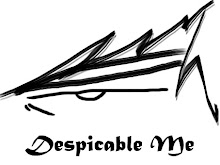1. Save the Cat! The Last Book on Screenwriting You'll Ever Need (Blake Snyder)
Blake Snyder is a working, selling writer himself, so that gives the reader a true inside glimpse into what it's like, what it takes, and what to expect on the long road to screenwriting stardom. Many screenwriting how-to tomes are written by guys and gals who have few or no real studio credits, so with this book you can be sure you are getting the info direct from the source of a successful member of the Hollywood elite.
2. Film Directing Shot by Shot: Visualizing from Concept to Screen (Steven D. Katz)
Film Directing Shot by Shot offers a good introduction to the rudiments of film production. Steven D. Katz walks his readers through the various stages of moviemaking, advising them at every turn to visualize the films they wish to produce. Katz believes that one of the chief tasks of filmmaking is to negotiate between our three-dimensional reality and the two-dimensionality of the screen. He covers the number of technical options filmmakers can use to create a satisfying flow of shots, a continuity that will make sense to viewers and aptly tell the film's story. Katz provides in depth coverage of production design, storyboarding, spatial connections, editing, scene staging, depth of frame, camera angles, point of view, and the various types of stable compositions and moving camera shots.
3. The Five C's of Cinematography: Motion Picture Filming Techniques (Joseph V. Mascelli)
The illustrations and printing style point quite obviously to the book's mid-60s origin. An introduction by someone who remembers what it was like to shoot film in 1908 and knew D.W. Griffith personally should tip you off immediately that this book is something special. Still, the illustrations are clear and help illustrate the text's points very well.
4. The Shut Up and Shoot Documentary Guide: A Down and Dirty DV Production (Anthony Q. Artis)
The key to Artis' style is his instant accessibility. He strives to give daunting, complicated technical and aesthetic concepts total and immediate clarity....he's as attentive to the subjective, intangible aspects of filmmaking (such as working with crews and interview subjects) as he is to the objective, technical ones....Most of this information is as applicable to fiction filmmakers as documentarians, making Artis' book a handy guide for a wide range of beginning independent directors and cameramen -American Cinematographer





0 comments:
Post a Comment